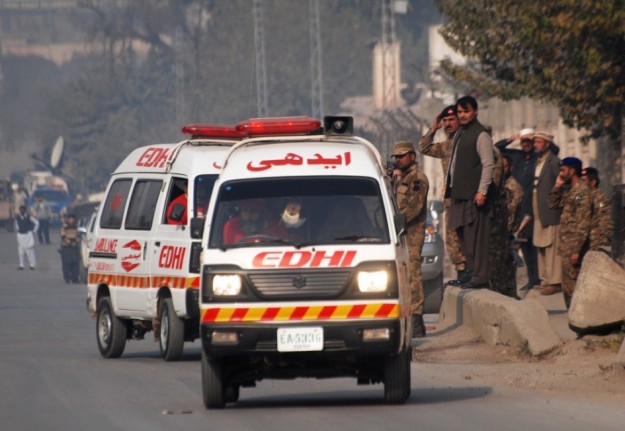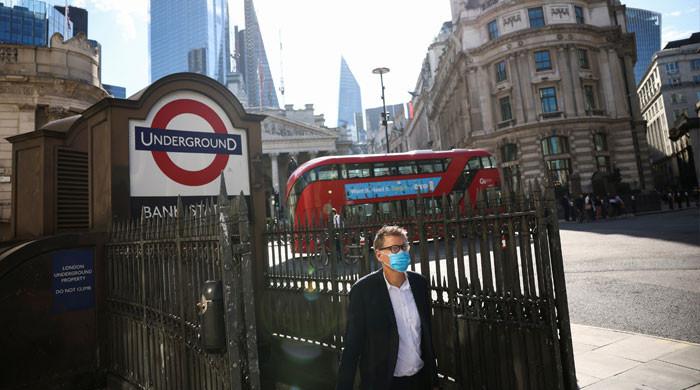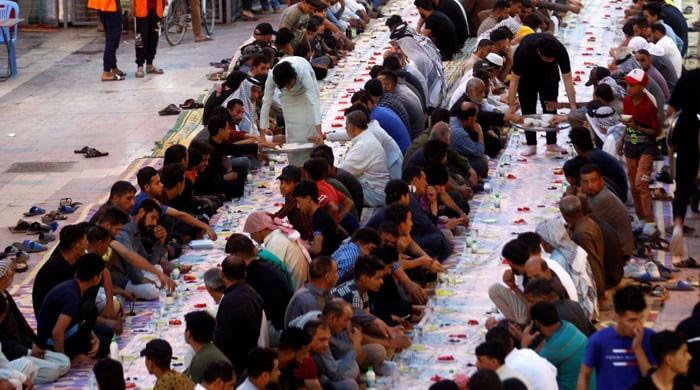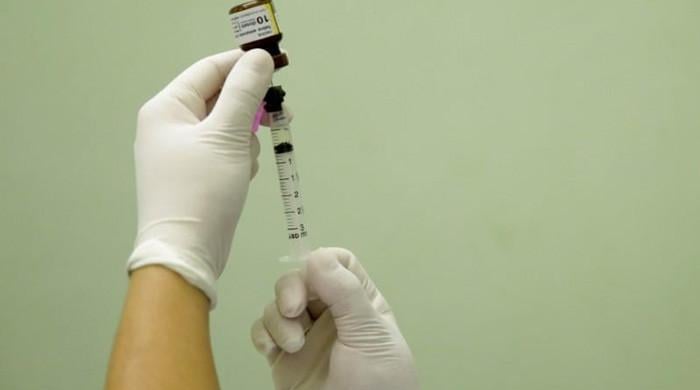[ad_1]
KARACHI:
As deaths due to Naegleria fowleri, also referred to as brain-eating amoeba, in Karachi, enter into the double digits, there is a growing concern amongst the populace that, just like other recurring diseases such as dengue and malaria, the provincial government will fail to curb its spread and prevent it from becoming a regular feature in the country’s deadly diseases portfolio.
The disease’s first occurrence in the port city took place in 2008, as per the provincial health department, and ever since then, the number of individuals affected by it has increased ever since. However, it is pertinent to mention that Naegleria is not just any other disease. According to the United States’s Centres of Disease Control and Prevention (CDC), the disease progresses rapidly and usually causes death within 1 to 18 days. The death rate, as per the CDC, stands at a staggering 97 per cent, and only 4 people from the 157 individuals in the United States who contracted the disease from 1962 to 2022 survived.
Naegleria is a special type of bacteria that thrives in freshwater and enters the brain through the nose, as per Dr. Faisal Mehmood, Head of the Aga Khan Hospital’s Infectious Diseases Department. “When the bacteria enters the brain through the nose, it causes a brain infection, after which it takes about 2 to 3 days for symptoms to appear. In some patients, symptoms will develop within 2 weeks,” explained Dr. Mehmood.
As per the CDC, the symptoms develop in 2 stages. In the first stage, a victim of brain-eating amoeba will experience fever, nausea, and vomiting. In the second stage, the infected individual will experience a stiff neck, seizures, altered mental status, hallucinations, and coma.
Once an individual starts developing symptoms, they are diagnosed with the disease after a medical expert has drained fluid from the spinal cord and has run tests on it, as per Dr. Mehmood. The procedure is known as lumbar puncture, and if after the procedure an individual tests positive for Naegleria, there is precious little that a doctor can do. “Some doctors will prescribe medication, but they are aware of the fact that the disease does not have a cure, and that the patient will likely die,” informed Dr. Mehmood, further adding that to date, only two patients had survived the infection in Pakistan.
Given the slim chances of survival, it is not surprising that Asif Qamar’s brother, Kashif Qamar, a 45-year-old patient from the city, did not make
it when he was diagnosed with Naegleria towards the end of October. However, Qamar, in a conversation with the Express Tribune, was of the view
that his brother would not have had such unbeatable odds stacked against himself if the government
and the Karachi Water and Sewerage Board (KWSB) did their job.
“The government and KWSB are responsible for ensuring the water that we drink is clean, but they clearly do not think so,” a visibly upset Qamar remarked.
“My brother was fine one day, and the next day he got a high fever, which the doctors at our local hospital told us might be food poisoning. We found out about the deadly disease on 3rd November when his reports came back positive for Naegleria, and then he passed away on the same day.”
Qamar reiterated that due to the government’s disregard for the public and negligence, four children were without a father now. Nevertheless, Qamar’s brother is not the only one livid at the government; the family members of 10 others from the metropolis, whose loved ones have passed away this year due to the brain-eating amoeba, are equally enraged.
The brother of Gul Haleem, a 38-year-old resident of the Gulshan-e-Maymar area of Karachi, who passed away last week due to Naegleria, also had a bone to pick with the provincial government and KWSB. “Where are the taxes that the Board collects from us going?” he questioned furiously, adding that providing clean water to the residents of the city was the Board’s only job, and it had failed to do so.

Design : Ibrahim Yahya
“We are shell-shocked that our beautiful brother was taken away from us just because the government is inept at doing its job,” he said, fighting back tears.
“He fell ill on the 4th of November and passed away on the 10th. The Sindh government and KWSB’s gross negligence resulted in the death of a proud resident of this city in just 6 days. They should be charged with my brother’s death,” Gul Haleem’s brother demanded as he broke down.
Jamaat-e-Islami (JI) Karachi’s leader and the runner-up in the city’s mayoral race, Hafiz Naeem ur Rahman, agrees with Gul Haleem’s brother’s sentiments. “The Mayor of Karachi, who is the head of the KWSB, has failed to perform his duties. He is liable for the deaths of the residents of our city,” asserted Rahman, adding that the former Pakistan People’s Party led Sindh government was also responsible.
“Had there been proper devolution of power to the local government, Town Chairmans and Union Council Chairmans would have had a say in the quality of water that the people of this city drink, and we could have avoided the tragic deaths due to Naegleria,” claimed Rahman.
While there is no way to ascertain whether empowered local governments would have fared any better in improving the quality of water in Karachi, it is pertinent to mention that Naegleria has plagued the metropolis since 2008. As per Aziz Rajpar, a former section officer at the Sindh Health Department, the first known case of the brain-eating amoeba was reported in the city back in 2008. “At that time we did not have any mechanism to collect data, so we would record the numbers manually on handwritten sheets. In 2009, the disease intensified, and the provincial health department started recording data,” informed Rajpar.
However, in light of Rajpar’s information, when the Express Tribune reached out to the Sindh Health Department, the officials of the department neither confirmed the existence of Naegleria in Karachi since 2008, nor did they provide any data on the total number of deaths to date.
Nevertheless, as per Rajpar, a total of 103 people in Karachi have died from the disease since 2011. There was 1 death in 2011, 9 in 2012, 3 in 2013, 14 in 2014, 12 in 2015, 3 in 2016, 6 in 2017, 7 in 2018, 15 in 2019, 8 in 2020, 7 in 2021, 6 in 2022, and 12 so far this year, according to the former provincial health department employee.
While officials of the Sindh Health Department did not confirm the number of deaths disclosed to the Express Tribune by Rajpar, some officials, under the condition of anonymity, conceded that the department had no experts of its own or coordination with other departments to check the quality of water that Karachi’s populace drinks on a daily basis.
However, the KWSB’s water quality test report, which was released in October of this year, a copy of which is available with the Express Tribune, states that samples of water obtained from some districts of the city show the presence of Vibrio cholerae, Escherichia coli, and other bacteria. As per the CDC, Vibrio cholerae, also known as cholera, can lead to profuse watery diarrhea, vomiting, thirst, leg cramps, restlessness or irritability; whereas, some strains of Escherichia coli, commonly known as E. coli, can lead to urinary tract infections, respiratory illness and pneumonia, and other illnesses.
With regards to KWSB’s water quality report, Faraz Haseeb, Chairman of Liaquat Town, feels that the presence of various bacteria in Karachi’s water highlights that the present system of governance has failed the city’s people. “If Town Chairmen, Union Council Chairmen, and Councillors were empowered, instead of all power concentrated in organizations like KWSB, Karachi’s water would not be causing the death of its residents,” contended Haseeb.
“Elected local representatives, with proper authority, can play a crucial role in addressing nightmares like Naegleria,” he added, reiterating Rahman’s views.
However, Dr. Syed Nawaz-ul-Huda, a regional planner based in the city, feels that merely a change of guard in who governs the city will not change much. “The city’s governance is plagued with bureaucratic mismanagement and interference. No one has paid heed to the contaminated drinking water lines that plague Karachi. While empowered local governments can help, the reality is that our city is at the mercy of a corrupt system,” maintained Dr. Huda.
As the empowerment of local governments can only happen through the provincial legislature, Dr. Sameen Sarfaraz, Consultant for Infectious Diseases at the Indus Hospital, suggests that to curb Naegleria’s spread, chlorine should be added to clean drinking water. “Ensuring that Karachi’s residents are drinking clean water is the government’s job, and for that, they should add chlorine to the water supply and spread awareness about the disease so that people are cautious,” recommended Dr. Sarfaraz.
In light of the infectious diseases’ expert’s recommendation, the Express Tribune contacted Karachi’s Mayor, Murtaza Wahab, and the CEO of Karachi Water and Sewerage Corporation, Syed Salahuddin Ahmed, to inquire about the government’s effort to combat the deadly brain-eating amoeba, but did not hear back from either of them.
Published in The Express Tribune, November 20th, 2023.
Maqvi News #Maqvi #Maqvinews #Maqvi_news #Maqvi#News #info@maqvi.com
[ad_2]
Source link












































